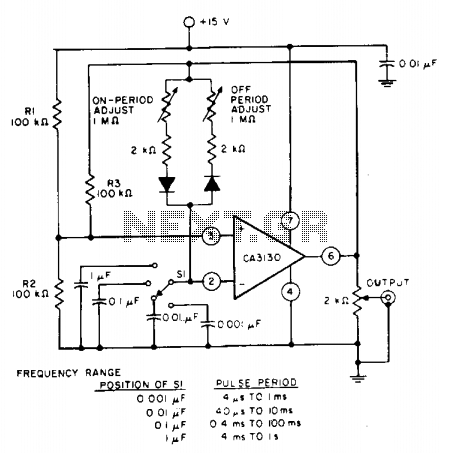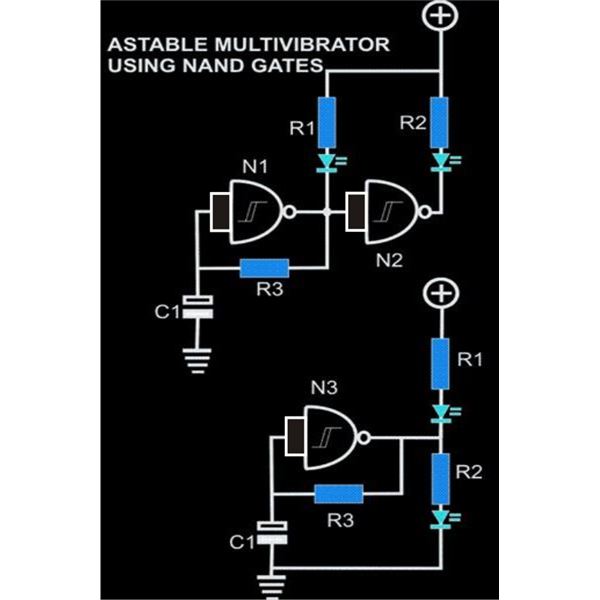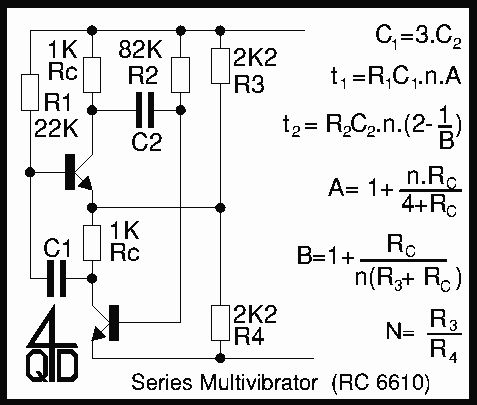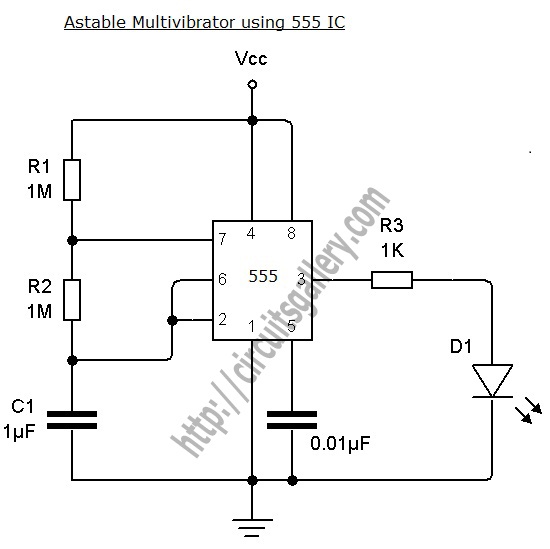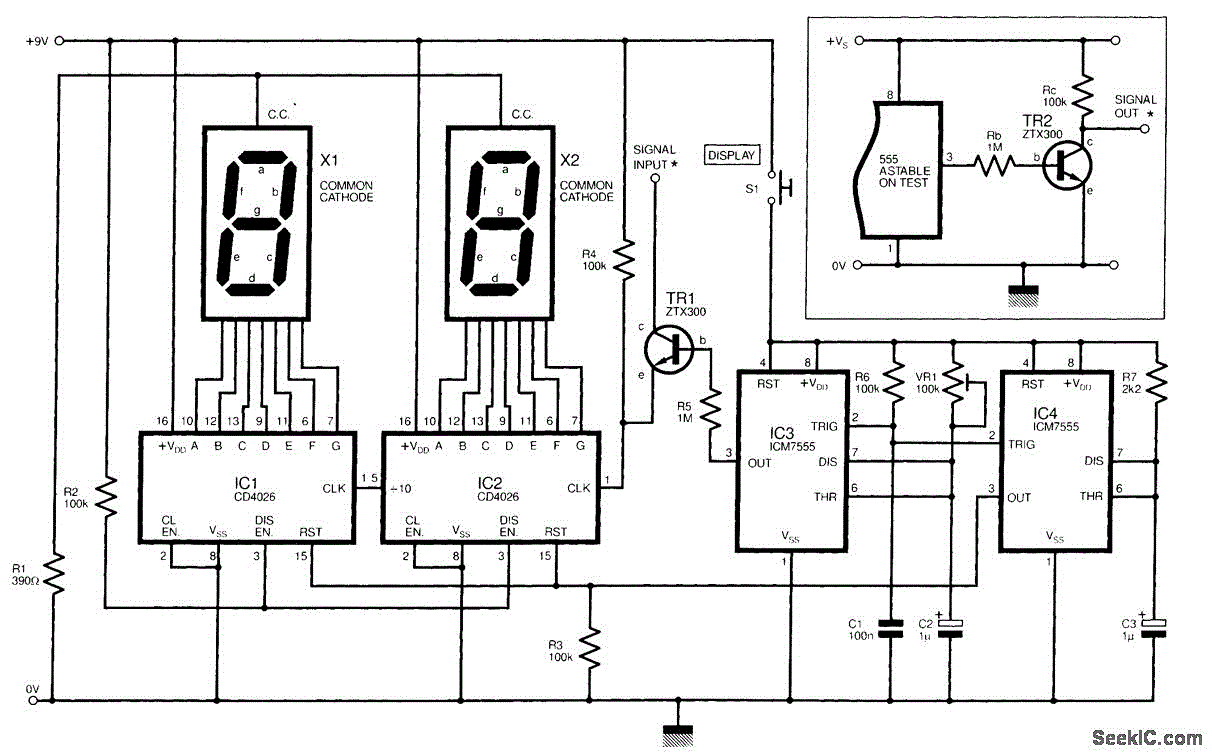
Astable

This plugin features a single 555 timer in astable mode. It is highly versatile and can be utilized for various applications, commonly serving as a clock signal generator for circuits. The configuration described produces a pulse frequency of approximately 2Hz with a low mark-space ratio. The circuit diagram is provided below.
The 555 timer in astable mode operates continuously, generating a square wave output that can be used for timing applications, pulse generation, or clock signals. In this configuration, the timer alternates between high and low states, creating a periodic output. The frequency and duty cycle of the output waveform can be adjusted by selecting appropriate resistor and capacitor values connected to the timer.
In the astable mode, two resistors (R1 and R2) and a capacitor (C1) are critical components. The resistors determine the charge and discharge times of the capacitor, which in turn sets the frequency of the output signal. The formula for the frequency (f) of the output waveform is given by:
f = 1.44 / ((R1 + 2 * R2) * C1)
The duty cycle, which indicates the proportion of time the output is high versus low, can be calculated using the following formula:
Duty Cycle (%) = (R2 / (R1 + 2 * R2)) * 100
In this specific implementation, the low mark-space ratio indicates that the output signal remains low for a longer duration compared to its high state. This characteristic can be beneficial for applications requiring a slower clock signal or for driving components that require limited activation time.
The output from the 555 timer can be connected to various loads, including LEDs, transistors, or other logic circuits, depending on the desired application. Proper decoupling capacitors should be used near the power supply pins of the 555 timer to ensure stable operation and minimize noise.
Overall, the 555 timer in astable mode is a fundamental building block in electronics, widely used for generating clock pulses and timing signals across various applications.This plugin consists of a single 555 Astable. This plugin is very versatile, and can be used for any number of things, but it often is used to give a clock to run a circuit. The plugin below gives a pulse of about 2Hz with a very low mark-space ratio. The circuit diagram is given below. 🔗 External reference
The 555 timer in astable mode operates continuously, generating a square wave output that can be used for timing applications, pulse generation, or clock signals. In this configuration, the timer alternates between high and low states, creating a periodic output. The frequency and duty cycle of the output waveform can be adjusted by selecting appropriate resistor and capacitor values connected to the timer.
In the astable mode, two resistors (R1 and R2) and a capacitor (C1) are critical components. The resistors determine the charge and discharge times of the capacitor, which in turn sets the frequency of the output signal. The formula for the frequency (f) of the output waveform is given by:
f = 1.44 / ((R1 + 2 * R2) * C1)
The duty cycle, which indicates the proportion of time the output is high versus low, can be calculated using the following formula:
Duty Cycle (%) = (R2 / (R1 + 2 * R2)) * 100
In this specific implementation, the low mark-space ratio indicates that the output signal remains low for a longer duration compared to its high state. This characteristic can be beneficial for applications requiring a slower clock signal or for driving components that require limited activation time.
The output from the 555 timer can be connected to various loads, including LEDs, transistors, or other logic circuits, depending on the desired application. Proper decoupling capacitors should be used near the power supply pins of the 555 timer to ensure stable operation and minimize noise.
Overall, the 555 timer in astable mode is a fundamental building block in electronics, widely used for generating clock pulses and timing signals across various applications.This plugin consists of a single 555 Astable. This plugin is very versatile, and can be used for any number of things, but it often is used to give a clock to run a circuit. The plugin below gives a pulse of about 2Hz with a very low mark-space ratio. The circuit diagram is given below. 🔗 External reference

